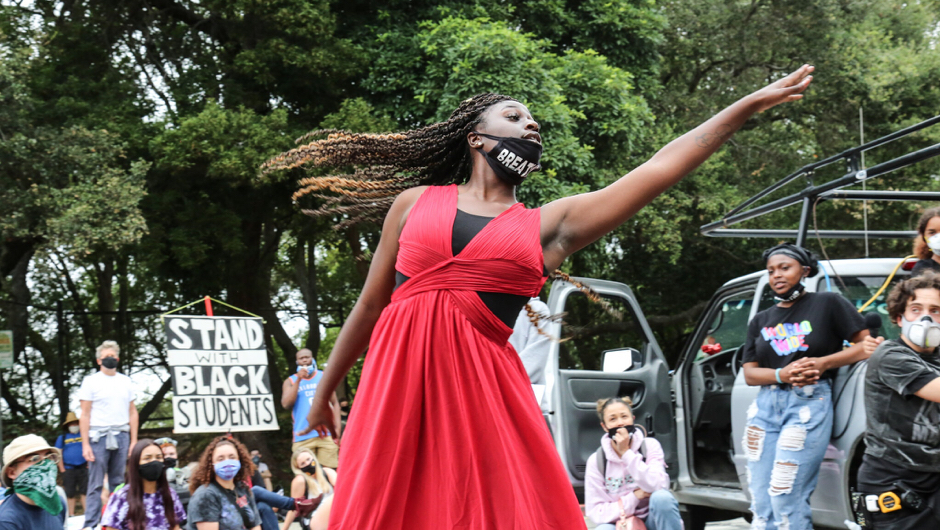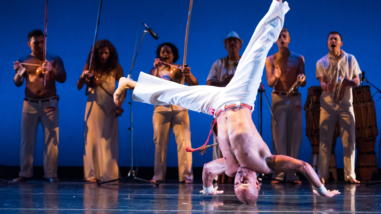Our commitment to equity and justice in our support for the arts

When the pandemic upended our communities, and the murder of George Floyd called so many people into the streets, we knew we urgently needed to reexamine our strategies and plans. Responding to the near-term economic shock of the pandemic, the Hewlett Foundation announced we would maintain our grant commitments for 2020. But was that an appropriate response, given the effects of the pandemic on the performing arts were immediate and devastating? The need for social distancing in support of public health struck at the core of many of our grantees’ work, which focuses on the intimate and immediate power of live performance. Meanwhile, the financial, structural, and social health of nearly all arts organizations, artists, and arts education programs came under immediate and persistent duress.
In the short term, the Performing Arts Program worked with grantees and regranting partners to offer them more flexibility on how our grant dollars could be used, and to ease or waive reporting requirements. We also launched the Bay Area Arts Crisis Navigator, to share funding opportunities and other resources for arts workers, small arts organizations, and creative enterprises in our region that were disproportionately impacted by the pandemic.
At the same time, it was clear very early in the United States’ experience of and response to the pandemic that the impacts of COVID-19 and public health orders were only exacerbating the same types of inequities that our refreshed strategies were meant to help counteract. Communities that have suffered from generations of underinvestment now struggled to access care; the safety net for independent artists and other freelancers hung on the caprices of political maneuverings in Washington, or was left completely out of the picture; and staggering numbers of students went unaccounted for. By the time the Movement for Black Lives was activating half a million people across the United States, the inequities of the arts sector, already deeply racialized, were accelerating before our eyes.
The Hewlett Foundation has been committed to performing arts in the Bay Area for more than 50 years. This commitment has always required trade-offs about how and where to invest, because every dollar we invest in one organization or community is a dollar we cannot invest elsewhere. That means that while our support is enduring, allocating our resources to best meet the needs of today’s Bay Area communities means its shape is always evolving. Reexamining the framework we developed in 2019, we found that our refreshed strategies did not need to change and, in fact, re-shaping our support had become even more urgent.
After reviewing our full portfolio, we decided to make final grants, equivalent in most cases to three years of funding, to about 20% of the organizations we had been supporting. We had already begun the work of concluding funding relationships with several grantees in 2019. Accelerating that effort in 2020 was both wrenching and urgent. These were difficult decisions that belied our longstanding admiration for each organization, its artistry, and its leadership, which in some cases we had supported for decades. We also decided to reduce our geographic scope, concluding grantmaking in Monterey County. Reducing the size of both our portfolio and our geographic scope will help us do a better job of ensuring our resources flow to those communities we have overlooked or underfunded in the 10 Bay Area counties we continue to serve.
Finally, with a one-time, $17 million allocation from the Hewlett Foundation board, we are making “adaptation grants” to bolster the ability of 34 organizations to transition to new operational and artistic practices that are needed both during and after the pandemic. These adaptation grants are not intended to solely support organizations in navigating near-term challenges, but will allow these organizations room to plan for, test, and enact structural and financial evolutions. Grantees will have flexible capital to redefine key partnerships, eliminate longstanding barriers, and set a foundation of resilience for their organization’s mission and the people it serves.
All of these efforts have been driven by the values of community self-determination, equity, and justice that our Performing Arts Program team identified as part of our refreshed strategy. In the face of rapid change and extraordinary challenges, these values continue to guide us to ask where our funds can make the most difference for communities, artists, and youth. We know we must commit to parts of the Bay Area where public and philanthropic investment has been lacking, to places that have absorbed new populations due to displacement, to arts and culture providers who have persevered—sometimes for decades—without meaningful foundation funding, and to the communities whose cultural lives continue to be constrained by the inequities and injustices of our time.
Right now, it seems more important than ever for our work to embrace the multitude of cultural meanings that can arise from a vibrant and diverse arts sector. Even, or perhaps especially, in the face of widespread trauma and sector-wide uncertainty, we still firmly believe in the power of the arts and artists to advance individual self-expression and community self-determination. This year we’ve seen so many people turn to arts and culture to make sense of what’s happening, to connect, to grieve, to heal, and as a powerful force for change. We must ensure the expansive power of the arts is an enduring part of our communities.
Exactly how that power will evolve in the Bay Area over the next several years is difficult to predict. Our region and its cultural life will continue to change in ways we can neither imagine nor control. What we can do, and what we intend to do, is continue to affirm that the power of the arts resides in communities, artists, and youth, in their unbounded capacities for creative expression, and in their collective ability to lead us through the changes that will come.

